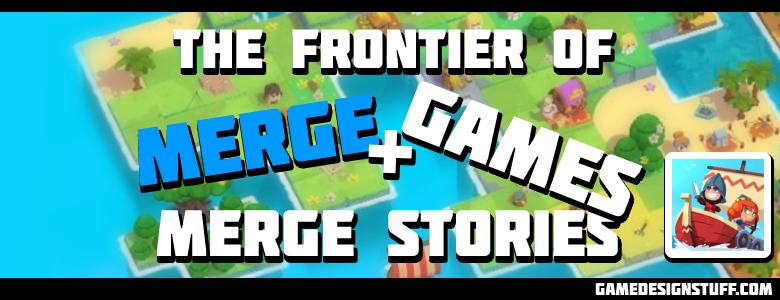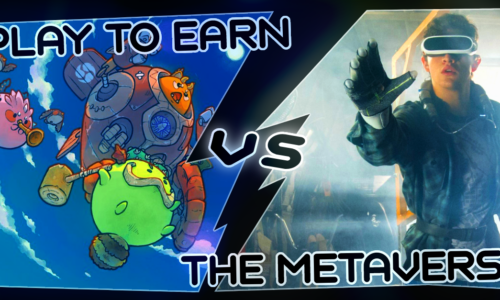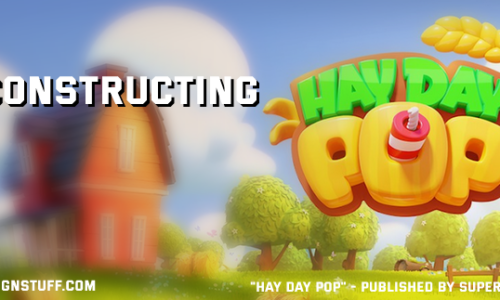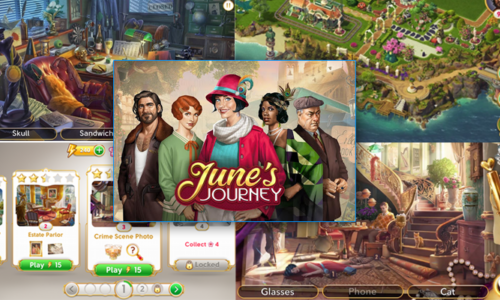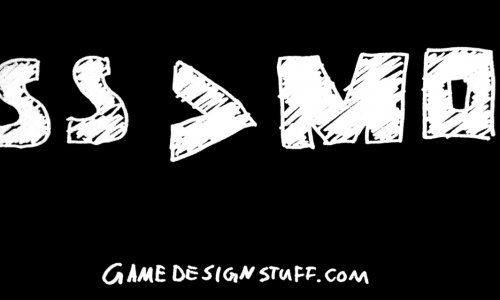A new genre of game is on the rise for some time now: “Merge Games”.
Are merge games just a blip on the radar or does this mechanic have what it takes to establish a new genre for years to come?
Merge games are not new per-se. Games like “Merge Dragons” have been around for some years. However, the mechanic is starting to reach out of its “collectible” niche. One game that has grabbed my interest in doing just that is Merge Stories by the Israeli developer Jelly Button.
Merge Stories is currently in Early Access on the Play Store and has been undergoing some heavy iteration since its original release in late 2019.
Overview
In this post I will:
- 🔬Deconstruct the appeal of the merge mechanic
- 🔄 Lay out the core loop of “Merge Stories”
- 🎨 Show how elegantly Merge Stories uses its core mechanic and how it ties together all gameplay systems,
- 💥 Critique: What potential does Merge Stories leave untapped / Where does it go wrong?
- 🔮 Discuss the future of merge games
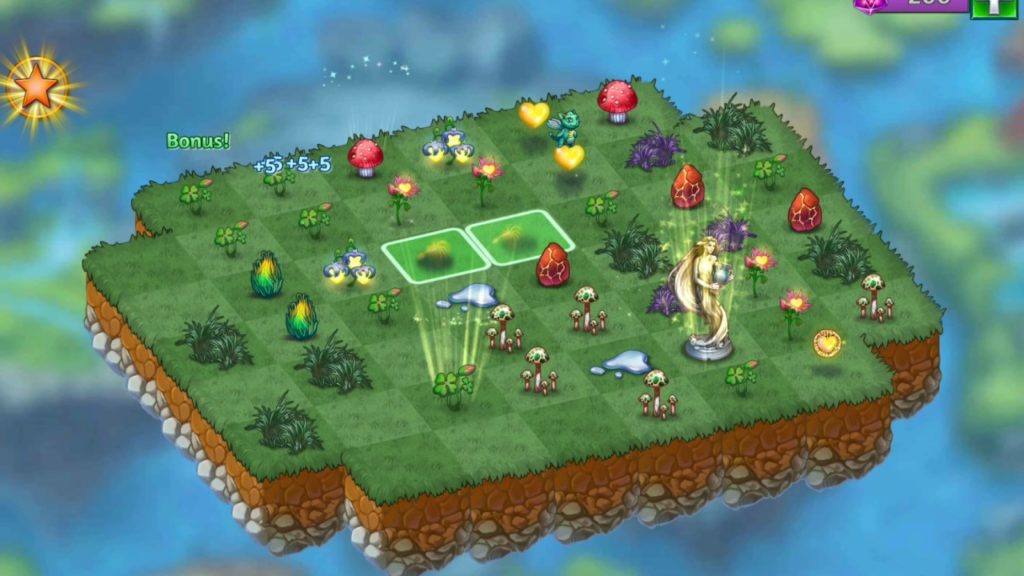

🔬 Deconstructing The Merge 🔬
What is this “Merging Mechanic?
“Merging” for the sake of this post and deconstruction is:
A mechanic that lets players “physically” combine items to obtain items of higher quality. The most common use case of merging is merging the same item type. E.g. 1Gem + 1Gem = 1 Cool-Gem. Physical means that instead of occupying 2 space units, the player has a higher quality item in just 1 space.
You can think of merging as a subset of crafting mechanics. Players make better things out of the things they have. The critical distinction to crafting is that “merging” mechanics play out in an actual limited space which makes for interesting dynamics and gameplay.
Merging 2,3 or 5 objects to create objects of the next higher levels, means that we’re dealing with an exponential growth of input requirements. To merge an item to Tier 4, it requires 2^(4-1) = 8 Tier1 Items.
But this is just the basic math. Merge games usually provide means to acquire higher level items directly so that players have the feeling they’re “jumping” ahead, where in truth the game is just compensating for the exponential slowdown.

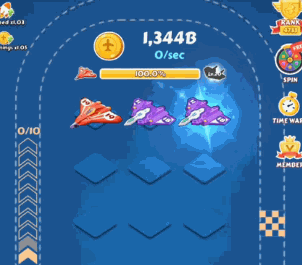
What makes it appealing?
Merging is a mechanic that appeals to players who like to optimize and progress.
Merging appeals to deeply rooted responses in our brain. I would consider the responses that merging hooks into as almost universal. The closer a game mechanic & system gets to the more primal parts of our brain, the more satisfying it is. And also the more players it will speak to. Of course people in general still respond differently – that’s why we have different genres out there that lean into specific tastes. So let’s dissect what makes this mechanic tick and which players it speaks to.
Organizing
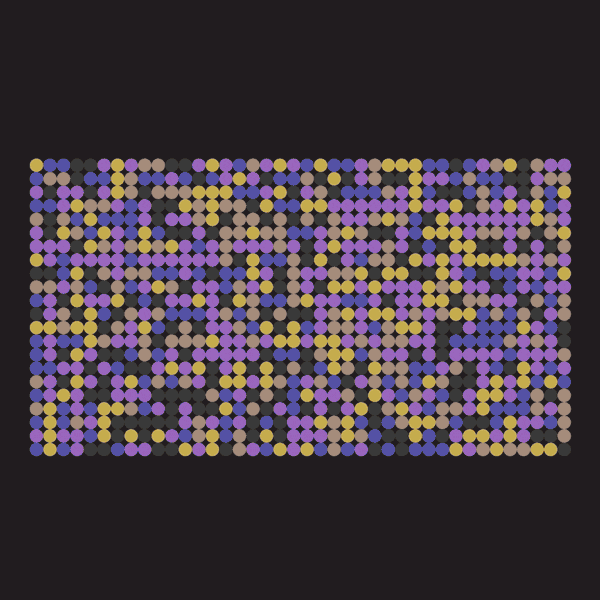
Players bring “order” to the chaos of messy items on “their” space. The nature is chaotic. Humans cultivate and tame nature. It is deeply satisfying and makes us feel connected and safe.
Growth
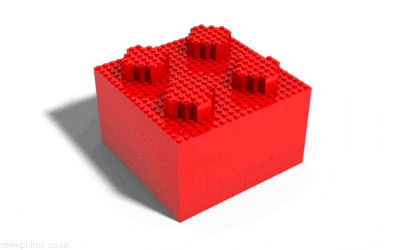
Players gain power, bigger numbers. Nicer items through their actions. Having more of the things that I care about is deeply satisfying. An overlap of the pleasure of growth and pleasure of organizing, is the pleasure in “hoarding”. Some merge games require organizing the space with loads of items.
Haptic

Drag & dropping items into each other is a very intuitive input on mobile devices. The input of the mechanic corresponds to the objects behavior in the game world.
What makes Merging attractive for design?
Now that we’re hooked into our ancient brain functions, what is that good for?
Engaging Core Mechanic
Merging is absolutely capable of being a core mechanic. It can be repeated often, it is satisfying, it allows for agency (with the right content). There is not much of a skill ceiling here in the mechanic itself. But there can be, if the content is designed accordingly in conjunction with the games’ mid/short term goals. Also, a high skill ceiling is not what we’re usually looking for in casual/mid core games.
Long Sessions
Merging as a core mechanic keeps players engaged for a long time in their session. As you will see, when deconstructing Merge Stories, instead of “idling” to get resources, players are engaged in very small loops that extend their session tremendously.
Extendibility & Versatility
It is easy to extend this system with more content. Merge Chains can branch. As designer you can add/modify the rules of where items for merging come from, and how exactly they merge.
Executing the Mechanic
We now know why the mechanic works, and what it can be used for. However, how do we actually build it and make it matter?
Communicate Value
To really hook into the “growth” aspect, items must communicate their value visually. This will make every merge rewarding when the result presents itself (this also ties into the next point: Merge Feedback). Additionally, when seeing all my items on the grid I should gain a sense of progress, achievement and pride.
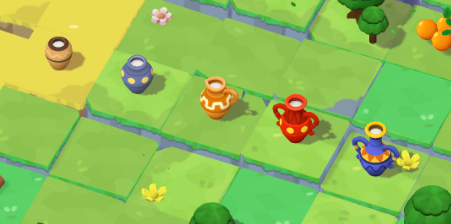
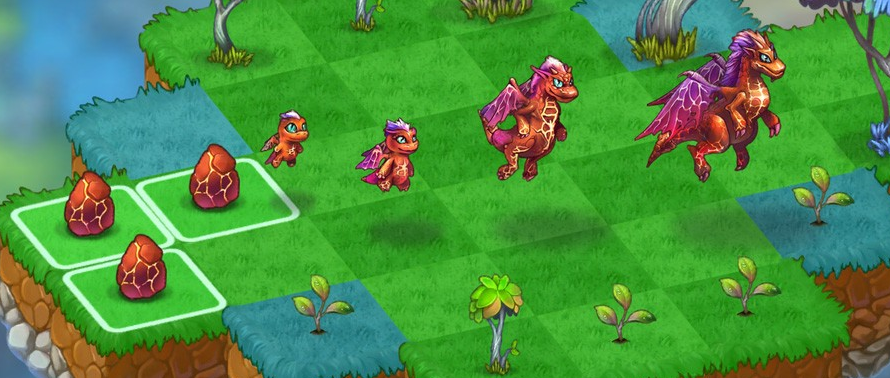
Merge Feedback
Feedback for merging needs to be exceptional. This is well spent development time. Players will see this hundreds of time in each session. This has to feel perfect and then the game benefits tremendously. Think about all feedback channels, animating your meshes, VFX, Audio.
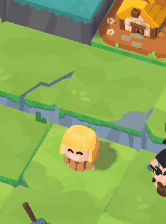
Balancing & Tuning
If you decide to have very long chains, also consider to give out some higher level items from your sources. Usually Grid-space is a limiting factor and you do not necessarily want players to merge everything from scratch again. Firstly, this would mean that your chains are not becoming longer/more complex, or that players need longer and more space to merge the current required tier of item.
Consider asking for different items that require different chain lengths. This way players have some short reward loops, as well as some long term ones.
Also, you have to consider to have sink for every item. When the “board” is full, players need to have a satisfying way to get new items on the board that they need for their current goal. In Merge Stories, players can sell any item on their board for a small amount of gold.
Purpose
Merging in itself is a powerful mechanic and executed in the right way will make it a joy to use. But never forget that there needs to be purpose behind the mechanic itself. You can’t fool players with a shiny mechanic on top of a hollow system.
Usage of the Mechanic
So now we have established what makes merging tick and when to consider it, and how to build it. However, as with any mechanics, competitors will come. The gameplay around merging is what matters, just merging stuff in itself will get old quickly and players will want something new. Also, merging is quite easy to build, so your innovation has to go somewhere and is prone to being copied! The merging mechanic lends itself particularly well to systems that require players to put a lot of effort into single items. That’s why we see the meta around classical merging games revolving around collections. Obtaining single items can take many thousands of base items. And the trick, as usual, is to wrap this otherwise “tedious” grind into incremental goals along the way.
So lets go into depth how it can be used in more interesting, harder to copy ways.
🔄 Merge Stories – Gameplay & Core Loop 🔄

Simply put, imagine Merge Stories as a Clash of Clans with merging in its core. Players prepare their troops to attack other players bases and invest resources that they gain from the raids to improve their base, which in return allows players to have more and better troops, and better defenses. The aspirational long term goal & motivation is to beat others and to progress up a ladder that symbolizes your superiority. The innovation of Merge Stories is the combination of this proven loop with the merging mechanic.

Unlike Clash-of-Clan-like games, where all of the actions at the core are executed in an UI, players actually craft and create their troops, resources and buildings through the merging gameplay.
I will use the generic term “item” for “things that exist at the base and can be merged”. So where do these items come from?
Item Sources
Raids
Think of raids as a “conversion” of units to items. Where the conversion coefficient is the player’s skill. The better they strategize, the higher the conversion is.

The difficulty of raids and their rewards depends on the players’ ladder ranking. Performing well here and completing these successfully is the main long term motivation for players, which puts a lot of importance on preparing for raids (hence merging the most powerful units).
In addition to that, the players’ session will last longer, the better they perform, as they use less units. The less they lose, the more they have, and they can raid more. Raids are the best source for items which are required to upgrade buildings.
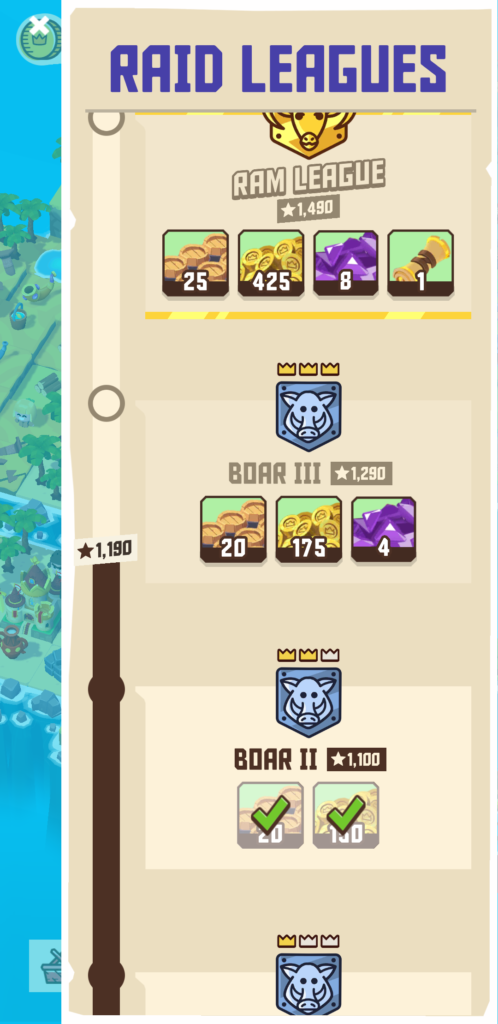
Barrels (Time)
As usual, time is a huge factor in any free to play game. Resources/ income based on time gives developers control over session design, progression speed, and pacing of events.
Barrels are generated over time and one of the main sources for items. Players pop the pool of barrels at their disposal and then they are placed in the base. Barrels are then opened and reveal their item.
They are key to the merging economy and even to session design.
Firstly, players can only place as many barrels as they have space. This creates gameplay, giving players more barrels than they can use, motivates them to organize and merge the existing items before placing the next round of barrels. Usually it takes 2-3 rounds of merging every item per session to make use of all the barrels that were generated. This is great for session design. It does not just “give stuff” to players every 4 hours, it gives them something interesting to do.
Secondly, barrels are a great way to control the players flow through the economy. How many raids are possible per session, depends on the ratio of Base Units (and weapons) inside the barrels. Speed of upgrades is also entirely controlled by amount of resource/ signature items inside of the barrels. Its strength is also its weakness though. Players don’t have much control over what items they get and that leads to every session feeling very tightly determined by what the barrels yield – which in return – ceases to be very surprising at a certain point.
Elegant Session Design through the Barrel-Mechanic
Barrels are designed to be the session pacer. They are the most important source for troops (units + weapons) that are used for raiding. When players run out of troops, and have merged all of their items, its time to end the session. Merge Stories features a “soft”-session closure. We can find this in many mid-core games: There is no fixed ending of a session (e.g. running out of lives) – instead players can just continue to play with diminished return of rewards, or, in Merge Stories’ case, they can delay the end of their session by playing well. This design hits 2 birds with 1 stone – A players session is limited, but in a way they have agency over.
Resource producers (Time)
These buildings (see right) produce resource-items over time up to their maximum. But there is a twist: remember that this is a merge game. The resource producers actually make items that are then placed on the grid, ready to be merged.
An exception for this is gold, which is the only resource that behaves as in non-merge-games (As in, it goes directly from the producer to the players inventory, without merging).

Defense
Another factor for how many items players have, that is related to units & raids, is to “not lose them”. The players base can be raided by other players. To counter that, players can place defensive units and upgrade defensive buildings. This gives players some basic choice & strategy to maximize their items.
Long Term Progression
This post is mostly about the aspects of merging so this is going to be quite brief. The game is in early access and I hope they soon add social features, the current ladder progression feels quite lonely. I have no idea whether other players are around or if I am playing against dead game states. And without feeling related to any other players, how would I feel rewarded for victories in “PVP”, the main driver of the game.
Players have 2 main means of progress. “Base progress” and “Ladder progress.” Both go hand in hand. As the players’ base continues to improve, players are able to clear increasingly challenging enemies in “PVP”, which in return leads to more rewards. This gives players a sense of achievement and at the same time a new goal to strive for. Base progression is linear – the game has a fixed sequence of buildings to upgrade. The devs have decided to not give players agency. The main reason I can see is its simplicity; we already know, from a balancing standpoint how we want players to upgrade their building, so why have them agonize over this low-impact choice? I could also see how it is problematic balancing-wise, to let players choose their next building as the player might choose one that has the most convenient cost, and it would remove challenge/ friction from the merge-economy.
🎨 Merge Stories elegant use & execution of its core mechanic 🎨
Comparing Merge Mechanic Usages
Compared to over Merge Games, Merge Stories goes much more into breadth with its multiple item types, each requiring less merges to obtain the highest level. The game motivates players to care about all of them and complete them in a high cadence. Different Item Types have different gameplay utility. Every merge thereby makes players look forward to a different experience they are going to use that item with. Merging feeds into different systems/ different rewards, making it feel much less repetitive by introducing different purposes and also different gameplay loops.
Other merge games have a different philosophy for complexity vs. breadth of their merge chains:
Merge Planes
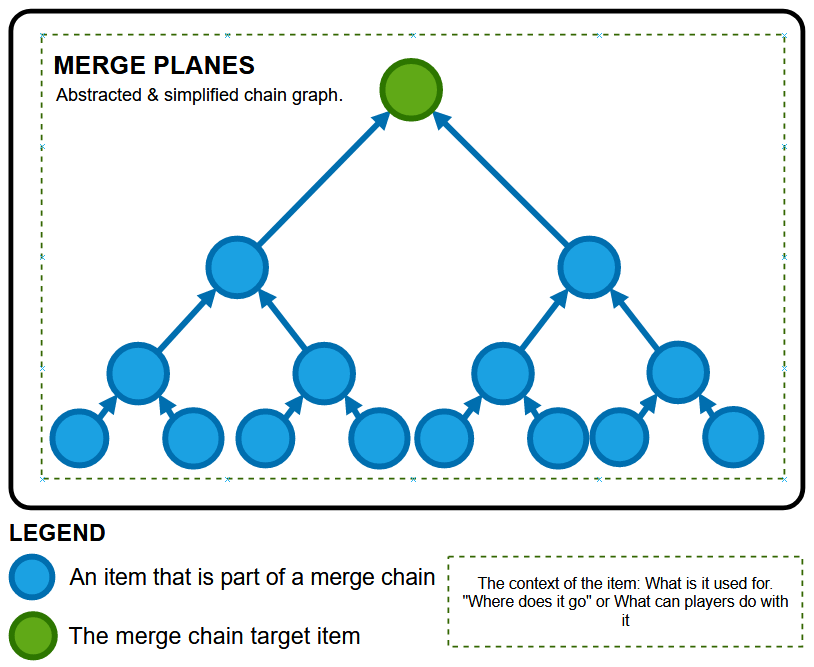
✔️PRO
- Progression in the merge chain = progression in the game
- players become more “powerful”
❌ CON
- Needs a way around the exponential cost to progress to the next tier
- Very repetitive without other mechanics and systems around it
Merge Dragons

✔️ PRO
- Many similiar things to complete, sense of completion and progress
- Simple to explain & learn
❌ CON
- Very grindy and repetitive
- high demand in content
Merge Stories

The beauty is that merging is used as the mechanic for different “verbs” (that would often be found in the UI). Of course, re-using your core mechanic is considered good game design, but not many games in the casual/free to play space actually make the effort to hook in their systems to their core mechanics in every aspect they can.
✔️ PRO
- More rewarding and more immediate
- Players merge similar items to be consumed in short loops
- High variation in chain size/ complexity
❌ CON
- Missing out on the highs of completing a very long chain.
Usage Deepdive
So lets dive into how exactly Merge Stories uses its core mechanic. What Merge stories does really well is to use its core mechanic for different purposes, which then creates interesting dynamics between items, available space, and progression.
Merging Same Units = Leveling up Units
Instead of clicking a button to create a lv3 Unit, players actually merge 4x lv1 units to 2lv2 Units, and 2 lv2 Units into 1x Level 3 Unit. As you can see, each unit feels much more valuable because of the time and effort that went into creating it. It takes more actions to acquire the unit, and the actions are inherently rewarding.

Merging Units with Weapons = Making different Units
This is one of the more interesting aspects that could be a great hook for adding more depth. Players use their weapons for the units that they want. There are different merge chains for the different units. Unfortunately, the difference of units in combat is not very significant to really make me think about what units to merge. More about that later.
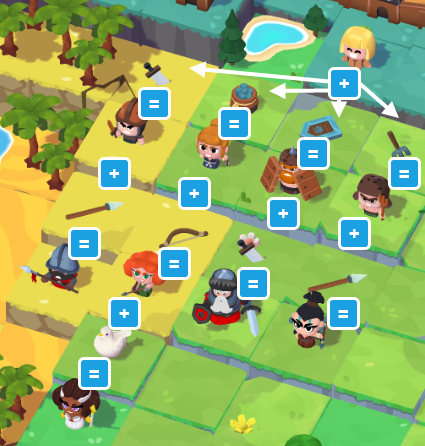
Merging Structures = Building
These merge chains are among the longest ones in the game. They give distinct rewards depending on the structure they assemble. Items for these chains come from the “merging reward” and from barrels.
Purpose: Mid/ long term goals that require multiple sessions to complete.
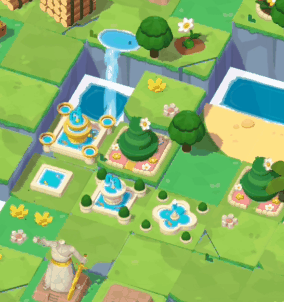
Merging Walls with Weapons = Fortify Walls
An alternative sink for weapons. Instead of bolstering troops for better attack, players can increase defenses. Gives players basic strategic choice.

Merging Resources = Increase Resource Stack Size
Wood and Iron are the two resources of the game. A lot of player time is spent on merging these into larger piles. For every merge, the resource value equals to the value of the input + 1. This +1 is the reward for merging. This is a very small reward for the time spent. Merging is fun and rewarding so I figure the economical value is neglectable, but let’s hope players don’t do the math. :)

Merge everything!
A special use case for resource merging is the merging of Hard Currency! How cool is that?! Instead of pouring out bits and pieces of HC to players, it actually lives in the game world, and the value can be improved through the players action: Merging. This feels great and gives players a sense of achievement and reward. It also tests players patience – using the HC as soon as players receive the item, would be a waste. Players should merge up to the highest Diamond pile. Kind of like a version of the Marshmellow test (testing the ability to delay gratification). But in that, I have the hypothesis that it actually makes players more committed to retuning and “finishing” their pile.

Reinforcing the core loop
Merge Stories layers more gratification on top of the inherently satisfying merging mechanics that. The game reinforces the second to second loop with every merge by:
- Giving a chance to spawn an additional barrel that gives progress towards one of the “project” items
- Adding progress to the next tile for their base
This is great because in a merge game there is often a delayed gratification. While a merge chain is being completed, the item just “sits there” and uses space. There is an anticipation and build up to completing the chain, which is great – but good mechanics must also feel and be rewarding with every execution. And having each merge progress the player a bit, makes it rewarding on top of merely feeling satisfying.
💥Critique💥
Missing Out on Agency
As strong as this system is, I feel that Jelly Button is missing out on a great deal of player agency that they could add to their content. Each of these item types’ merge chain is quite shallow and most items have only a single purpose. Since players do not have much actual choice over what items to obtain, the game sometimes feel as it might as well play itself.
I merge the resources I have, I use the weapons that the barrel give and therefore end up with the units that I can make, not thinking about what I want to make.
Depth & Agency in Combat
- Strategy requires depth: Combat units should make a difference, layout should make a difference to the outcome of a raid. Difference between units is currently too small to feel impactful when prepared, nor deploying them smartly. The only difference that seems to matter is that between ranged and melee units. However there are more than 10 different units. This puts a huge cap on progression. If current units are not differentiated, how will new units be exiting?
- Strategy requires reliability: More reliable = strategy Hard to control/ predict, hence hard to have a strategy. I cannot interfere with combat once units are deployed. Placement Position & Timing are my only input for the combat. It is quite hard to predict how units will behave in combat and sometimes I feel like I lose my whole raid in a situation that might as well turn out as a perfect win. This renders my choice of units meaningless. And then “meaninglessness” trickles down to the core loop where I should be motivated to create different unit types.
Depth & Agency in Merging
The game controls most of the games incomes: Barrels, and raids. In a merge game (where most items = 1 merge chain) this means that the game also pretty much controls what items I end up with after merging. My merging is just making the inevitable happen. That unfortunately shines through quite quickly after going through the core loop for a few days.
To be fair, there are some factors which let me influence what items I end up with:
- The caravan lets players trade items (for a limited amount of times)
- When raiding an island, the placement of units influences what you pick up
- Units/ Walls have different recipes (hence there is a choice of where to spend my weapons)
Suggestion1: Depth in Recipes
Have more items that have multiple sinks (e.g. the weapons) + fix the combat. Then the unit choices that are in the game will matter.
Suggestion2: Mechanical Depth in Merging
Other merge games have depth within the actual merging mechanics. Adjacency, group size etc. matter. Merge Stories uses only a simple 1+1, which limits the extendibility by group size. However, I think there can be done more.
The problem with the name
I find the framing of Merge Stories as a “Merge Game” problematic. Because at its core fantasy it is not. It uses merging as a mechanic, but it does not deliver the “collection and seemingly infinite growth” as its aspirational goal. The same goes for “Stories”, this is not a narrative driven game that gives players any story, nor a narratively coherent world.
Limits of Growth – Practicability
Can a session be too long? Yes it can! Usually a long session time is an indication of a strong player engagement. However, if the game monetizes on players extending the session we have a potential conflict where players “burn out” on a session, or even the game, and don’t have a strong desire to extend their session.
The session limiter are barrels. The barrel-feature looks like the strongest monetization feature, it fulfills the need for more items, which drives the core gameplay. However, at the point where I have merged all the items, popped all the barrels, raided with the units I can, I am already 20 minutes into my session. At that point, purchasing more barrels also means that I have to commit to another 10-15 minutes of gameplay.

After such a long session, that is rarely the case though. Merge Stories does not handle the growth that comes with merge games well. Progressing usually meant that I spent more time merging per session. My base grows, and thereby the amount of barrels, thereby the amount of time I “have to” invest to get closure. It is great, it is necessary, to extend session length. But it should not happen by pushing the (baseline) “point of closure” further out. I really like Merge Stories, as a player, but the session getting longer and longer, for the same “reward” (ladder progress) will burn me out.
Limits of Growth – Extendibility
As laid out, Merge stories relies on short merge chains for usage in its core loop, as players should achieve economic outcomes through merging. This limits the depth that each chain can/ should have. The devs would be forced to add different types of chains to their game, instead of adding depth to their existing ones – also branching out more on the recipes could make the game more complicated.
If the devs want to add different chains, we’re running into a problem with the barrel mechanic as the main driver for items.
I am not saying it is impossible to extend the game with more chains/ content – I just think it is more design effort than in the comparison games, as it requires very careful tuning/ adding/ modification of the sources and sinks.
Disclaimer
Do you agree or do you think my logic is flawed? I am not one of the devs so this my
hypothesis about a design challenge they might have. Would love to hear other opinions!
🔮 The Future of Merge Games 🔮
Merging as a Mechanic
As laid out, merging itself is an inherently satisfying mechanic that works really well on mobile due to its tactile input. I can see the mechanic working in almost any genre. Especially in slow paced real time or turn based gameplay. Merging can work in the core gameplay, or in the progression. It is a mechanic after all, be creative!
Merging as a Genre
The mechanic lends itself to games with a comprehensive collection meta game. The name “Merge + X” tells players what to expect. Which as a combo has a lot of potential that can clearly be marketed to players. However, as in many other emerging genres, I think the innovation opportunity for new developers, is the meta. I think the (next) crown of merge games goes to the game that is able to lean into collection but embeds into an engaging progression system that is tightly intertwined with the merging mechanic.



